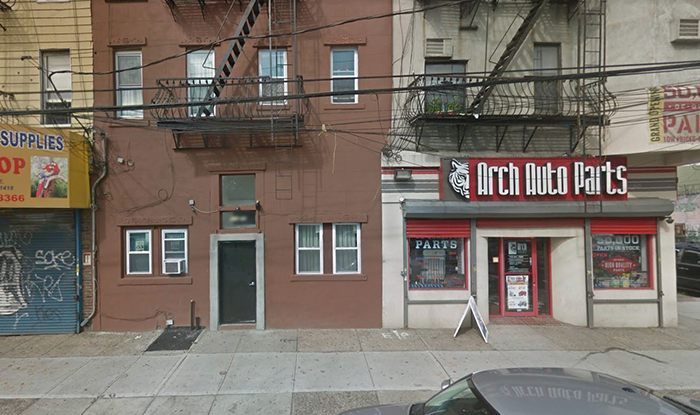Photo Courtesy of Google
This apartment building on Atlantic Avenue in Richmond Hill was on this year’s list.
By Michael V. Cusenza
Eighteen Queens buildings hosting 370 residences have been placed in the City Department of Housing Preservation and Development’s Alternative Enforcement Program, an initiative that shines a spotlight on multi-family edifices whose owners have allowed them to fall into dangerous disrepair, Mayor Bill de Blasio announced on Monday.
The borough buildings, including one in Richmond Hill and another in South Ozone Park, each have enough health and safety code violations to allow for enhanced enforcement by HPD, including roof to cellar inspections, fees, and an AEP Order to Correct underlying conditions and bring the buildings up to code.
According to the administration, a total of 250 apartment buildings across the city – home to 3,970 families – have been placed on the AEP list this year, featuring a combined total of 26,301 housing code violations. Brooklyn leads the way by far, with 127 buildings on the infamous ledger.
“This kind of willful negligence puts tenants in danger. It is immoral and illegal and we will use every tool we have to go after property owners and make these buildings safe for New York families,” de Blasio said.
The 250 buildings have a total of 4,859 immediately hazardous (C-class) violations, 21,442 hazardous (B-class), and 7,602 non-hazardous (A-class).Immediately hazardous violations include inadequate fire exits, evidence of rodents, lead-based paint, and the lack of heat, hot water, electricity, or gas. Class B hazardous violations repair conditions, such as leaks or holes in plaster or sheetrock. Non-hazardous, or A-class, include more minor leaks, chipping or peeling paint when no children under the age of 6 live in the home.
In order to exit the list, a building owner “must act affirmatively to demonstrate that conditions at the property are improving,” according to HPD. This means correcting all violations associated with heat and hot water, all immediately hazardous violations; 80 percent of B-class mold violations; 80 percent of all violations related to vermin; 80 percent of all remaining B- and C-class violations; and correct all related underlying conditions detailed in the AEP Order to Correct.
The owners of the buildings already owe the City more than $1.5 million to HPD Emergency Repair Program charges. The charges accrue when repairs are done by HPD to correct immediately hazardous violations that the owner failed to address in a timely manner.
According to HPD, since AEP’s inception, 1,647 buildings with 22,033 apartments have been repaired, and more than $74 million in repair costs recovered by the agency.

